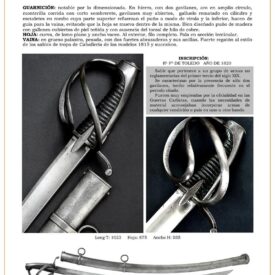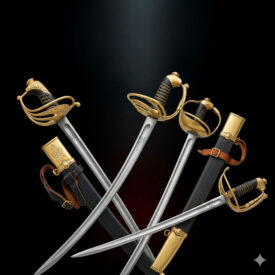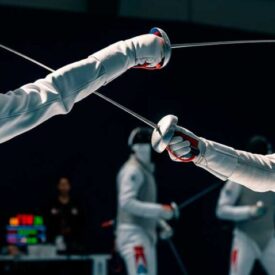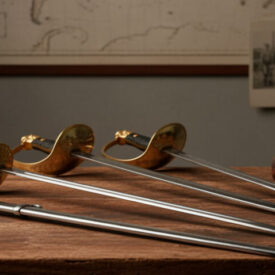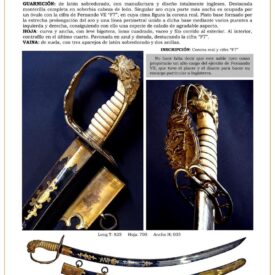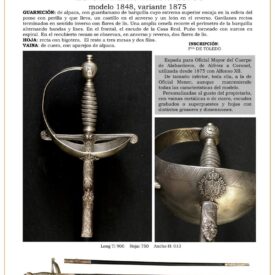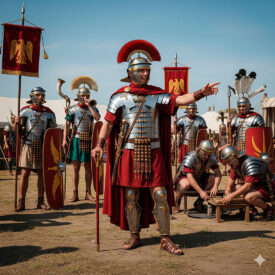Certainly! Here’s the translation of the provided text into English, with the requested substitutions at the end: —
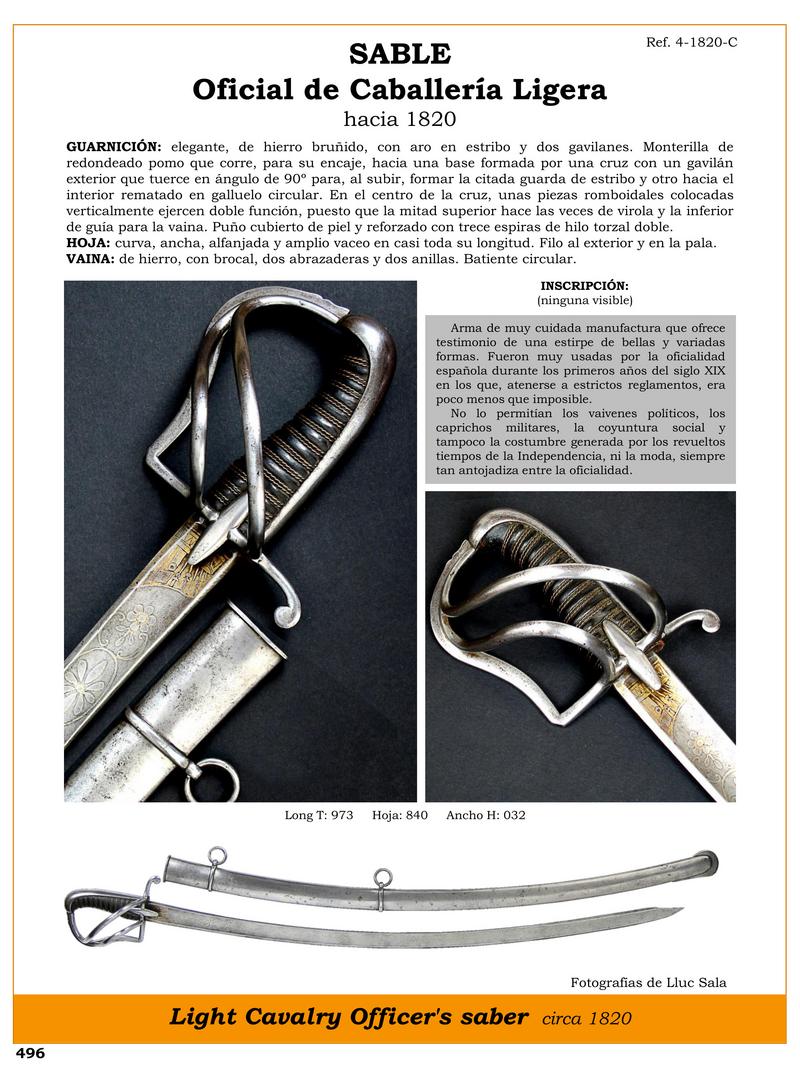
ENCYCLOPEDIA OF SPANISH SWORDS
OFFICIAL LIGHT CAVALRY SABER FROM AROUND 1820. Author: Vicente Toledo Momparler (sword expert)
| Reference | 4-1820-C |
|---|---|
| Name | Official Light Cavalry Saber |
| Period | 1820 |
| Hilt | Elegant, made of polished iron, with a loop on the stirrup and two hawks. Rounded pommel monterilla that extends, for its fitting, into a base formed by a cross with an outer hawk that bends at a 90° angle to form the stirrup guard and another inward ending in a circular weapon. In the center of the cross, vertical diamond-shaped pieces serve a dual purpose: the upper half acts as a collar and the lower as a guide for the scabbard. The grip is covered with leather and reinforced with thirteen spirals of double twisted thread. |
| Blade | Curved, wide, with a fuller and broad hollow in almost its entire length. Edged on the outside and on the blade. |
| Scabbard | Made of iron, with a throat, two mounts, and two rings. Circular chape. |
| Inscription | No visible inscription |
| Total Length | 973 mm |
| Blade Length | 840 mm |
| Blade Width | 32 mm |
| Description | A finely crafted weapon that bears witness to a lineage of beautiful and varied forms. They were widely used by Spanish officers during the early 19th century, a period when strict regulations made their use almost impossible. Political upheavals, military whims, social circumstances, and the turbulent times of the Independence period, as well as fashion—always so capricious among officers—prevented their universal standardization. |
| Photograph | Photographs by Lluc Sala |
— Let me know if you need any adjustments or further translations!
